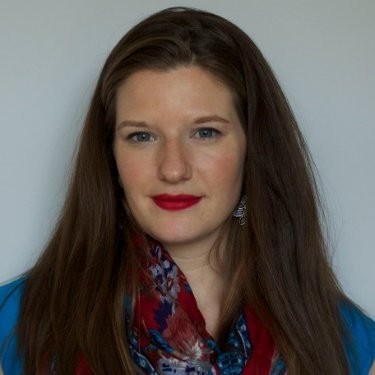As a user experience professional, you know that your field is a hot one, but in the grand scheme of things, UX careers as we know them today have not been around for all that long. So you decide that you need some perspective.
You visit with an old timer who lives down the street and ask what work was like for him back in the day. He tells you about his co-workers and how close they all were. He tells you that every year, new people would start and those of a certain age would retire. He had an employer that took care of employees from start-date through retirement with generous pension plans and the like.
You sit back, and you think to yourself, whoa, that sounds like marriage and nothing like jobs of today!
Even as we are now as a society finally breaking down the remaining barriers to marriage equality, sociologists and demographers tell us that the percentage of people who decide to get married has declined. What they don’t say, or often don’t associate, is that the parallel experience of being married to your workplace is also declining.
Let’s just go ahead and say it; the most successful UX professional and employer relationships are looking less like marriage—at most long-term dating relationships and sometimes more like a series of Tinder flings.
What we’d like to propose here is that you can have a successful UX career regardless of whether you choose the stability of a long-term commitment, the exploration of an open relationship, or the excitement of continual new, but short term, relationships.
Let’s take a tour of the different kinds of relationships a UX professional can have with their workplace(s). One of these likely describes you.
Looking for Stability in a Committed Long-Term Relationship
Are you the kind of person who is looking for stability in your workplace? The most stability a UX professional can usually find comes from working as part of an in-house UX team. You see the same people every day, work on related features or sets of products, and learn the ins and outs of your business and its customers.
As part of an in-house UX team, you should have the opportunity to learn and grow in your career, in your UX skills, and in your confidence in applying those skills. As your committed partner, your employer should expect you to learn and grow as a practitioner. They should send you to some of the many great UX conferences. They should encourage you to speak at conferences and to get involved in local UX events. They should provide you opportunities for training—both formal and informal. You should expect them to grow and change as well— for internal reasons and in response to external factors like changes in technology or the marketplace.
Never expect a ring
Our caution to you, however, is to never expect that because they want a long term committed relationship with you—and vice-versa—that this is an unbreakable marriage. In fact, it’s likely that at some point you or employer or both may come to acknowledge that the relationship no longer makes sense. Breaking up, even years down the road, is almost inevitable in the UX industry of today. That doesn’t mean you need to always be actively looking, but it does mean that you need to be willing to reflect on your job from time to time to make sure it’s still working for everyone involved.
Don’t let yourself go
When you are in a long-term romantic relationship, you should never get so comfortable that you totally let yourself go. You should still take care of yourself, eat healthy, stay fit, and, in short, make sure that you look good to the outside world. Likewise, as a committed professional, you should never let yourself go either. You should be maintaining your social media profiles and your online (and offline) “brand” and professional network in the same way. Never think—and certainly never let your company tell you—that tending to your social media profiles and staying visible in the UX world means that you are attempting to cheat on your workplace. If your company suggests such a thing, it may be time to consider a different partner who will give you more respect as a professional.
Explore the Scene with Open Relationships
While you may hear in the rumor mill that all the design agencies are being swallowed up by large corporations in need of UX departments, in fact, there are tons of UX consulting agencies out there and only a few well-known ones have been bought out. There is still a lot of agency work to go around.
You have to know yourself before you can set yourself up for a fulfilling, successful career
This means there are plenty of opportunities for consultants in the UX world who like coming home to their employer—a consulting agency—at the end of the day even as they flirt all the time with other businesses. For those of a certain temperament, this works very well. You jump into bed with other businesses but only for a brief time, and you always go back to your employer at the end.
Flirt, but don’t fall in love
As a consultant for an agency, you most likely have signed an agreement with your employer that you are allowed and encouraged to “play” with other businesses. But you cannot leave your employer for one of these others, even if you find yourself falling in love. Sometimes, even if you do love your employer, you may end up spending a lot of time with your client. As with any new relationship, it’s easy to become infatuated with their workplace. You get to see their perks and bask in what might seem to be an incredible corporate culture. But for legal and ethical reasons, even if you do want to leave your employer, you can’t jump ship for one of their clients.
Enjoy the openness
Enjoy the open relationships that your employment at an agency allows. It can be fun to jump in and out of these temporary relationships while having the stability of your agency as your home base. If you want to continue your relationship beyond the initial scope of work, assuming that your agency has no objection (and why would they?), take the initiative to do some business development, and try to propose ways that you can both continue to work together.
An Open Relationship or a Secret Fling?
So maybe you do have a full-time job, but you’re not feeling totally fulfilled and are wishing for something that you are not being offered by your workplace—be it different types of UX work, different people, or more income. You could go ahead and have a relationship on the side with a consulting gig or some kind of side job. Whether or not your main employer offers you in-house UX work or consulting work, the excitement and satisfaction you get from this other work on the side may help you avoid having to break up with your employer when your employer isn’t fulfilling all of your needs.
Moonlighting adventures don’t have to be paid. You can also find excitement in speaking at events, volunteering at UX organizations, or writing for external UX resources like blogs or maybe even UX Magazine. Whether paid or not, the key is to find career-related activities that complement your daily work while still satisfying your needs.
Don’t cause jealousy
You don’t want to make your significant other jealous, and you need to make sure you are still putting your number one priority first; your full time job pays you a salary, gives you benefits, and sometimes very nice perks. In return, you agree to fulfill the commitments of your team. Also, be sure that you take on side projects that can truly be done on the side: completed at night, on weekends, or worked into a flexible schedule. And always prioritize your full-time job’s obligations before tackling outside work.
Be open about your other relationships
Working on the side can be tricky to navigate. Your employer might have questions about the appropriateness of a side gig. You may struggle with how to tell your employer about the side gigs without making them angry or scared that they will lose you. While a hidden fling with other projects seems exciting, the best policy is to be honest. Tell your boss you’d like to take on a new challenge, but frame it in a way that highlights the benefits it will have to your employer. Maybe it involves learning a new skill that you could use on the job, or maybe you’ll gain new insights that could help make your team and company stronger as well. When in doubt, talk to your employer about the legal implications of taking side work; unless it’s a direct conflict of interest, you should be in the clear.
Play the Field
If you’re an independent contractor and not an employee of any company you can choose to work on multiple projects for multiple clients, simultaneously without any guilt, and turn down suitors—potential projects or clients—that don’t fit your goals, interests or schedule.
You’re on your own
As an independent, you avoid the restraints of a relationship, but you also lose the main advantage of a committed relationship: having a partner to be there for you and back you up when you need it. You will be the primary, and only, person really looking out for your career. And if you and your clients don’t agree about the boundaries of your relationship or other issues, you may find yourself in uncomfortable conversations that you need to deal with on your own with no wing person.
Date frequently or not at all?
Like someone who dates frequently but usually for a short duration with each partner, freelancing includes many of the same highs and lows. It can be phenomenally exciting to be a freelancer. But you have to be OK with the fact that while sometimes you will have periods where you can date frequently—with lots of projects in hand—other times, you may find yourself without any dates at all. And if you find that you’re “on the bench” and have no work, you can consider looking at the “dating sites” (sites that may aggregate available contract projects). You can contact those that may be “just friends” (your network of UX associates) for coffee or a drink. Whether immediately or at some point in the future, they may be able to introduce you to your next date: a new client.
Know Yourself to Understand Your Relationships
Much like personal relationships, you have to know yourself before you can set yourself up for a fulfilling, successful career. Understand the types of challenges you enjoy and the level of risk that you are willing to take. Try to fully examine and—to whatever extent possible, experiment with—different kinds of work environments to figure out where you thrive. As you progress in your career, continue to be reflective and self-aware, and always make sure that you can be yourself in whatever type of work relationship you choose.
Image of overly wedded couple courtesy Shutterstock.








